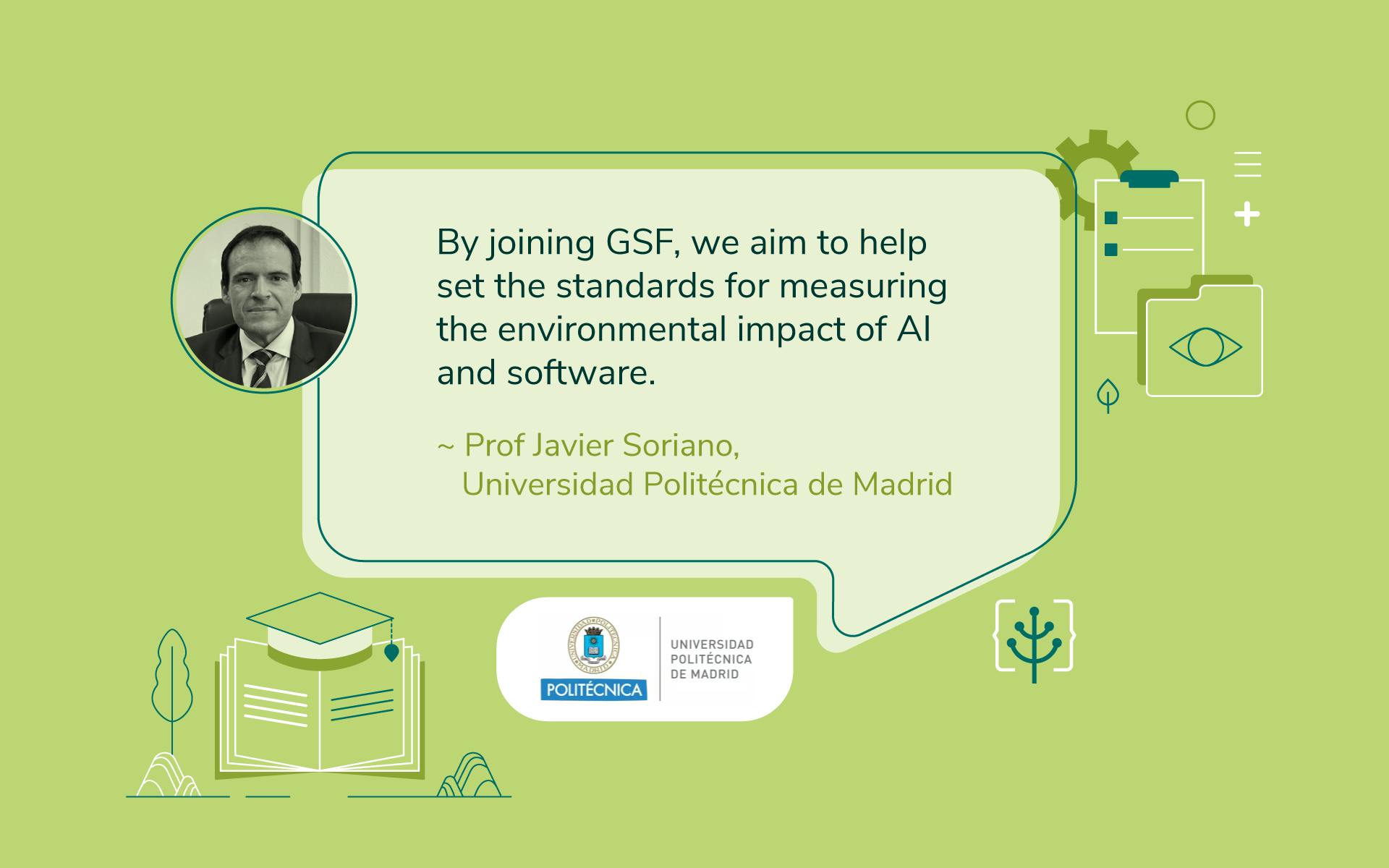Javier is a full professor at the School of Computer Engineering. He is a founding member of the UPM Artificial Intelligence Research Center.
Can you tell us about Universidad Politécnica de Madrid and your role within the organization?
Universidad Politécnica de Madrid (UPM) is the oldest and largest technical university in Spain, specializing in Computer Science, Engineering, Architecture, Sport Science, and Fashion Design.
Founded in 1971 by merging classical Spanish Engineering and Architecture Schools, some dating back to the eighteenth century, UPM excels in international rankings. We rank 55th worldwide in Engineering and Technology according to QS rankings, leading Spanish universities in this field.
UPM has four campuses with 18 Schools and 21 research centres, which serve over 4,000 staff members and 35,000 students.
How does sustainability manifest in your organization?
We're committed to the UN Agenda 2030 Sustainable Development Goals and have established a comprehensive sustainability policy. As an International Sustainable Campus Network (ISCN) member and Charter signatory, we embed sustainability across all university operations, from governance and research to teaching and community engagement.
Our results speak for themselves: we've achieved an 82% reduction in CO2 emission intensity since 2015, earning Spain's "Calculo y Reduzco" certification three times in a row. This achievement brings us closer to reaching our net-zero target by 2040.
Our climate strategy, coordinated by the Ecological Transition Commission since 2021, focuses on energy efficiency, emissions reduction, facility optimization, carbon capture, waste minimization, green space enhancement, and circular economy practices.
Are there any other sustainability initiatives that you can share?
Our Artificial Intelligence Research Center leads multiple green software and green AI initiatives. We're collaborating with Accenture, a founding GSF member, on Spain's National Green Algorithms Programme. This includes developing standards for measuring algorithm energy consumption and creating a Green Tech quality label.
We've worked with the Spanish Association for Standardisation (UNE) to develop the UNE 0086 Specification for measuring AI systems' energy consumption, carbon footprint, and water consumption, currently in final voting. We're also members of the Coalition for Sustainable AI and recently participated in ISO's consultation on resource-efficient software.
How do you hope to contribute to and benefit from the GSF?
As a technical university with deep connections across academia and industry, we bring the ability to amplify GSF's impact and see many opportunities to benefit from it.
Through GSF membership, we hope to gain access to insights and methodologies that we can integrate into our research and teaching. Direct connection to the GSF's global network of practitioners and industry leaders can enrich our academic programs and strengthen our position as a sustainability leader in European higher education.
Our immediate contribution includes showcasing GSF at major scientific forums. We're organizing IEEE COMPSAC 2026 in Madrid, one of the world's premier software conferences, where we've embedded sustainability into the core program through the "Ethics, Social & Safety Considerations" track.
As a partner based in Spain, we also hope to bring a unique national and European perspective to the GSF, helping ensure that GSF's work aligns with European sustainability frameworks. We aim to promote green software tools and standards through our projects and contracts with public bodies, agencies, and companies, supporting practitioners and organizations to better understand and reduce their software's environmental impact.
This article is licenced under Creative Commons (CC BY 4.0)
